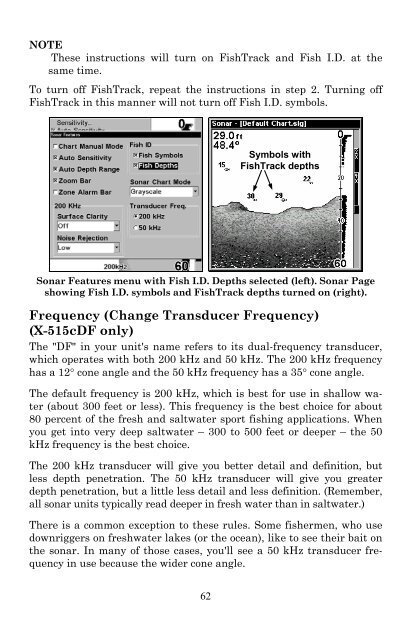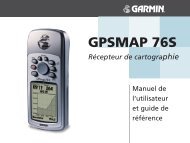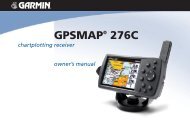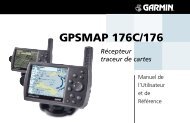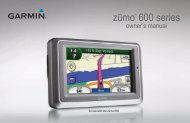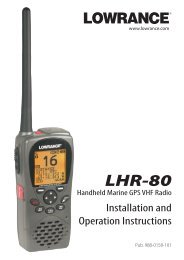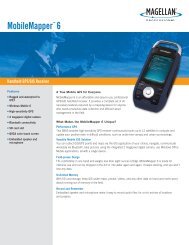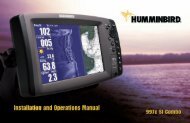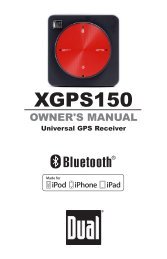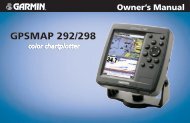X515C DF & X510C Manual - Lowrance
X515C DF & X510C Manual - Lowrance
X515C DF & X510C Manual - Lowrance
You also want an ePaper? Increase the reach of your titles
YUMPU automatically turns print PDFs into web optimized ePapers that Google loves.
NOTE<br />
These instructions will turn on FishTrack and Fish I.D. at the<br />
same time.<br />
To turn off FishTrack, repeat the instructions in step 2. Turning off<br />
FishTrack in this manner will not turn off Fish I.D. symbols.<br />
Symbols with<br />
FishTrack depths<br />
Sonar Features menu with Fish I.D. Depths selected (left). Sonar Page<br />
showing Fish I.D. symbols and FishTrack depths turned on (right).<br />
Frequency (Change Transducer Frequency)<br />
(X-515c<strong>DF</strong> only)<br />
The "<strong>DF</strong>" in your unit's name refers to its dual-frequency transducer,<br />
which operates with both 200 kHz and 50 kHz. The 200 kHz frequency<br />
has a 12° cone angle and the 50 kHz frequency has a 35° cone angle.<br />
The default frequency is 200 kHz, which is best for use in shallow water<br />
(about 300 feet or less). This frequency is the best choice for about<br />
80 percent of the fresh and saltwater sport fishing applications. When<br />
you get into very deep saltwater – 300 to 500 feet or deeper – the 50<br />
kHz frequency is the best choice.<br />
The 200 kHz transducer will give you better detail and definition, but<br />
less depth penetration. The 50 kHz transducer will give you greater<br />
depth penetration, but a little less detail and less definition. (Remember,<br />
all sonar units typically read deeper in fresh water than in saltwater.)<br />
There is a common exception to these rules. Some fishermen, who use<br />
downriggers on freshwater lakes (or the ocean), like to see their bait on<br />
the sonar. In many of those cases, you'll see a 50 kHz transducer frequency<br />
in use because the wider cone angle.<br />
62


